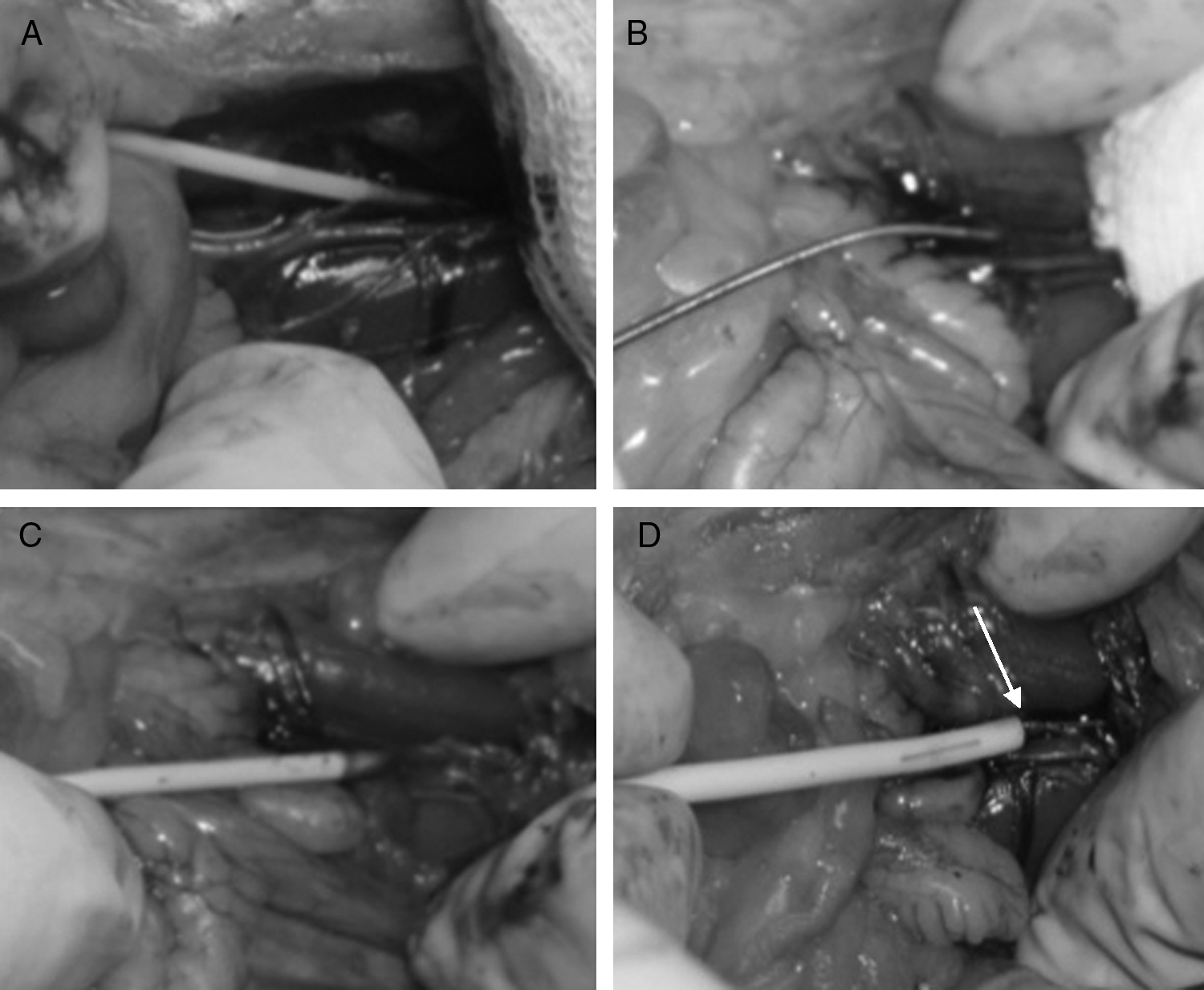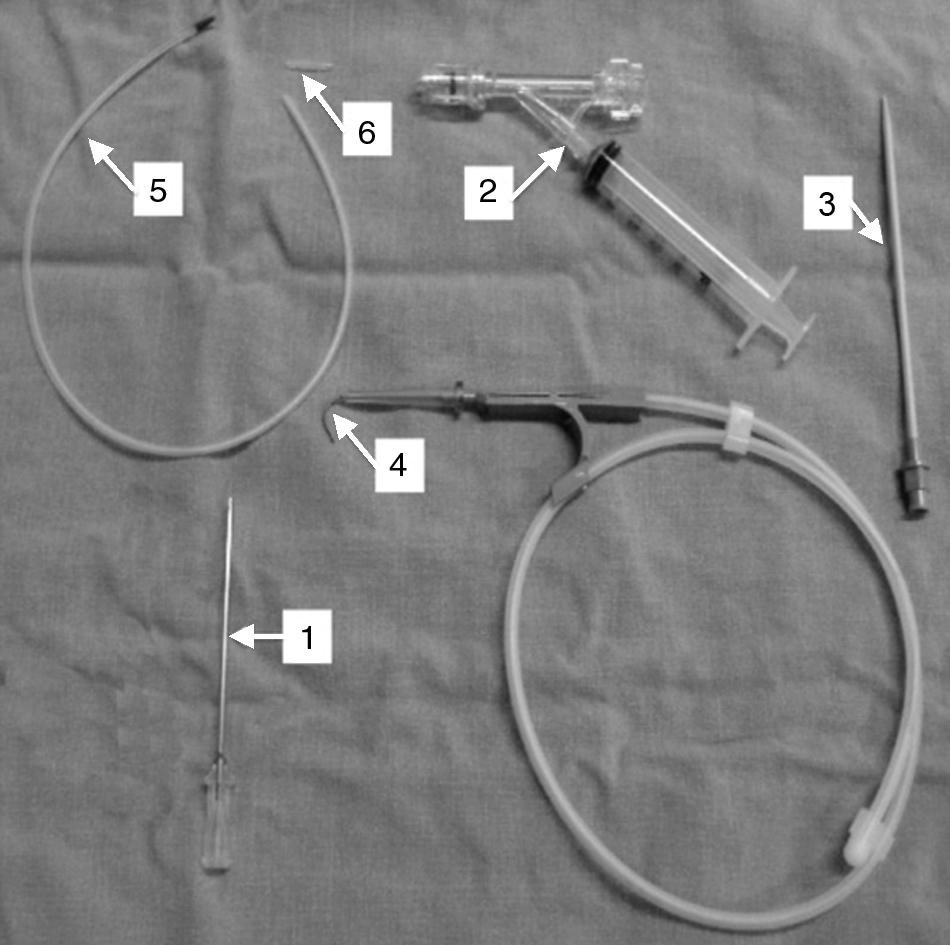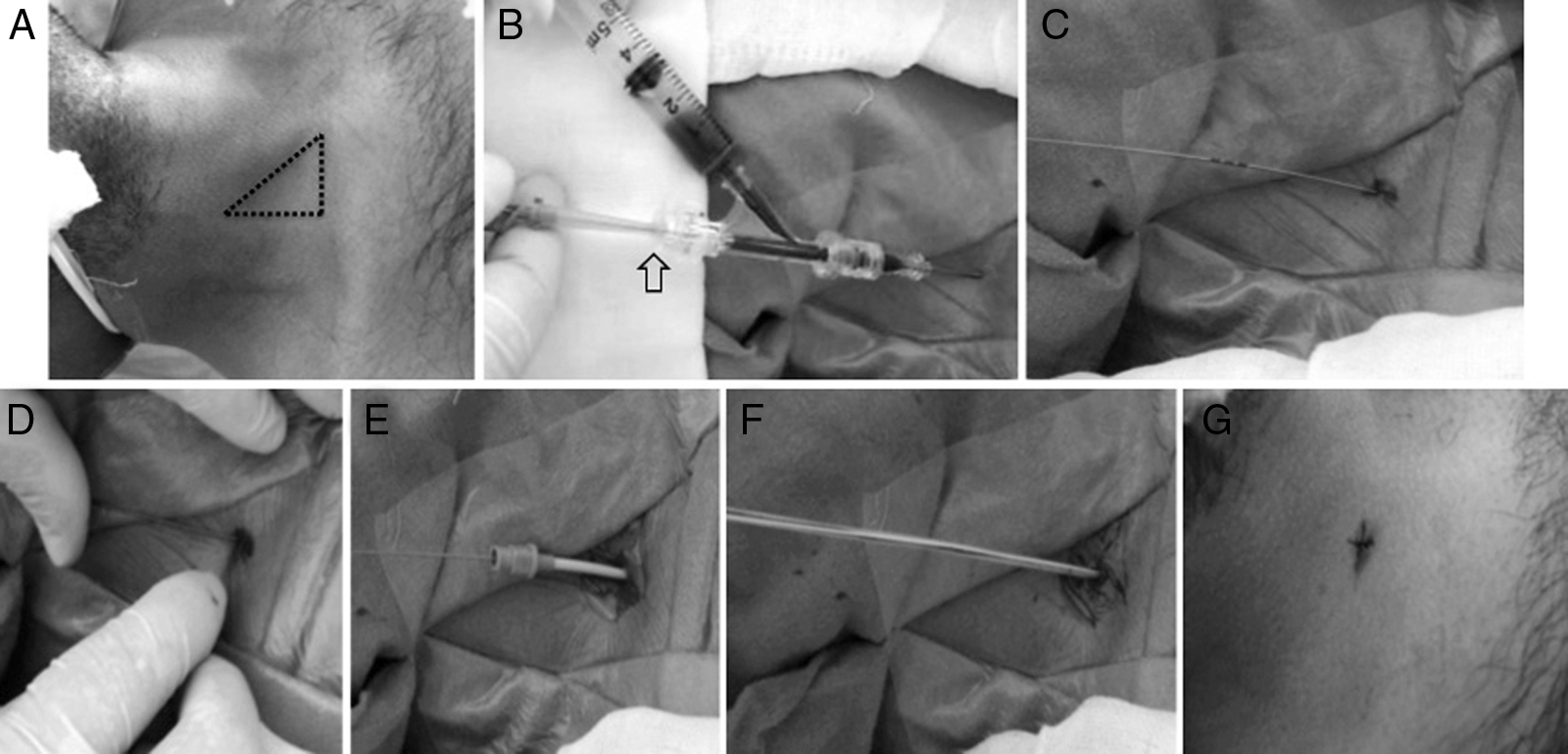El sistema de derivación ventriculoatrial está indicado en el tratamiento de algunos casos de hidrocefalia. El catéter distal se suele insertar a la aurícula derecha mediante la disección venosa cervical. La inserción percutánea ha sido descrita con éxito, sin embargo su uso no está mundialmente extendido. El objetivo es describir las modificaciones del catéter distal del sistema de derivación ventriculoatrial, la técnica para su colocación percutánea y la evolución clínica.
Material y métodosSe modificó el catéter distal tras su uso en 4 especímenes animales. Se diseñó «sobre la guía» (over the wire) y se disminuyó su flexibilidad, y además se agregaron accesorios al equipo. Luego se utilizó en humanos bajo ligeras modificaciones de la técnica de punción yugular. Se evaluaron las complicaciones, el tiempo operatorio y la evolución durante 6 meses.
ResultadosDurante un año se trataron 6 pacientes adultos portadores de hidrocefalia en quienes el peritoneo ya no podía ser receptor del líquido cefalorraquídeo. No se presentaron complicaciones y el tiempo operatorio medio fue de 34min (incluyendo la colocación del catéter proximal). La hidrocefalia remitió.
ConclusionesLa técnica percutánea ha demostrado ser útil: disminuye el tiempo quirúrgico y presenta un muy bajo índice de complicaciones. Al parecer, las modificaciones hechas al catéter distal no provocan complicaciones y se evita el uso de otros materiales diseñados para otros propósitos. Se requieren más casos para realizar un análisis definitivo.
A ventriculo-atrial shunt is indicated for the treatment of some hydrocephalus cases. The distal catheter is usually inserted into the right atrium through cervical venous dissection. Percutaneous insertion has been described with success; however its use is not widespread. The aim of this work is to describe modifications in the distal catheter of a ventriculo-atrial shunt, the technique for its percutaneous insertion and the clinical outcome of the process.
Material and methodsThe distal catheter was modified after its use in 4 animal specimens. It was designed «over the wire», with its flexibility being reduced and accessories being added. The device was subsequently used in humans, with slight modifications of the jugular vein catheterization technique. We evaluated complications, surgical time and outcome during 6months.
ResultsIn the course of one year, 6adult patients in whom the peritoneum was no longer receiving cerebrospinal fluid were treated for hydrocephalus. The mean operating time was 34minutes (including proximal catheter insertion). There were no complications and ventricular size improved.
ConclusionsThe percutaneous technique has proved useful: it reduces surgical time and has a very low rate of complications. Apparently, modifications made in the distal catheter caused no complications and avoided the use of other materials designed for other purposes. More cases are required to perform a definitive analysis.
Article

If it is the first time you have accessed you can obtain your credentials by contacting Elsevier Spain in suscripciones@elsevier.com or by calling our Customer Service at902 88 87 40 if you are calling from Spain or at +34 932 418 800 (from 9 to 18h., GMT + 1) if you are calling outside of Spain.
If you already have your login data, please click here .
If you have forgotten your password you can you can recover it by clicking here and selecting the option ¿I have forgotten my password¿.









